"Members of the Preston family enjoying the carnival celebrations at Greater Brighton, in 1928. Various activities are seen taking place on the beach, seafront, streets and promenade. Includes shots of a jazz band performing outside; people driving miniature cars around a small race track and a woman playing on a one-armed bandit machine. Also includes footage of the Duke and Duchess of York's visit to the Royal Pavilion." (NWFA Online)
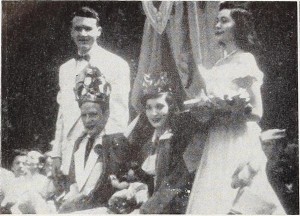
"With the help of almost unbelievable luck from the weather man, Helen C. Welsh has achieved a high level of what is essentially newsreel filming. Her subject matter is in itself appealing — displays of tulips in a public park, children wearing amazing holiday headgear, dancers performing Old World figures, all climaxed by the pageantry of the coronation of a new king and queen of the festival. But Miss Welsh handles it expertly. Her viewpoints are varied and her camera work accomplished, while a wisely sparse and well recorded narrative ties the whole presentation into an attractive package. Albany's Tulip Festival is colorful, entertaining and fulsome as a record of a city's spring holiday." Movie Makers, Dec. 1950, 464.
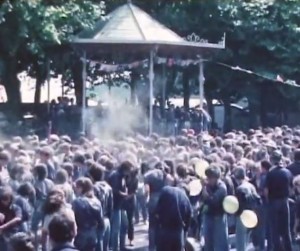
Documental sobre la Fiesta del Ganso en Lekeitio. Dentro de las fiestas y tradiciones de Euskalherria, el Antzar Eguna de Lekeitio destaca por su gran poder de convocatoria. Las cuadrillas de mozos acompañados de charagas que amenizan el acto, conducen a la popa de sus botes al líder de cada grupo hasta el ganso, que amarrado por sus patas cabeza abajo, cuelga de una soga que cruza el puerto. Mediante tirones de esta soga, los mozos agarrados al cuello de los gansos, son izados una y otra vez hasta arrancar la cabeza del animal o caer al agua agotados. Esta singular e insólita fiesta ha despertado gran polémica entre sus detractores y seguidores. Actualmente los gansos que se emplean están muertos o son de plástico.
Texto de Miguel Ángel Quintana
Documentary about the Goose Celebration in Lekeitio. Among the celebrations and traditionsof Euskalherria, the Antzar Eguna of Lekeitio is one of the most attractive events. The troops go accompanied by musicians, and they lead the group leader towards their boats' stern until reaching a goose that is tied upside down by its legs, hanging from a rope that crosses the port. By pulling the rope, the participants hang on to the gooses neck, and are raised over and over again until they tear the goose's head or they fall to the water exhausted. This singular and unusual celebration has produced controversy between followers and detractors. Currently the gooses employed are either dead or made of plastic.
Text by Miguel Ángel Quintana.
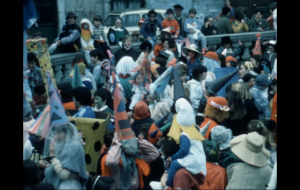
Umeen desfilea aratusteetan.
Un desfile de disfraces infantiles en una fiesta popular celebrada una vez al año en Lekeitio.
A children's costumes parade in a popular annual celebration in Lekeitio.
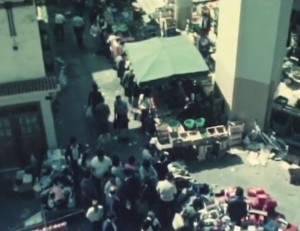
Todos los miércoles en Villafranca de Ordizia se celebra una singular feria que, en muchos aspectos, marca la tendencia de los precios y estimación de los productos del campo, ganado, etc.
Every Wednesday in Villafranca de Ordizia, there's a singular fair that, in many ways, marks the trend for prices and estimation of country goods and cattle.
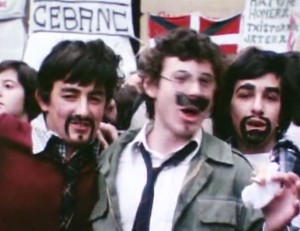
Feria de Santo Tomás en San Sebastian.
Saint Thomas Fair in San Sebastian.
"Film about three little boys, played by Doug, Bill and Lorne Woodley, the sons of Charles Devenish Woodley, visiting the Canadian National Exhibition in Toronto on a sunny day." Library and Archives Canada.
"Scenes of various arrangements and exhibits at Bramhall flower show in 1934. Interior shots of the exhibition marquees, show table displays being judged by show ground officials. The film also includes footage of the flower shows at Southport and Mottram in 1932. Various livestock classes are judged in the competition ring. The winners of each section are seen standing with their owners in front of the camera." (NWFA Online Database)
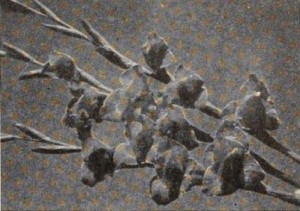
"Bulbs and Beauty reveals in painstaking detail the planting, cultivating and harvesting of gladioli in the vast fields surrounding the town of Momence in the state of Illinois. In this elaborate undertaking, Haven Trecker unfolds in well planned and profusely close-upped sequences the many colorful aspects of this popular plant in the life of flower-loving America. The harvesting sequence is followed by somewhat generous footage of a flower festival, the big annual affair in glad-minded Momence; and the festival in turn is followed by a seemingly endless parade in tribute to these bounteous blossoms. Bulbs and Beauty, accompanied agreeably by magnetic sound on film, appears to have been made for informative and record purposes. It fulfills these functions in a lively and competent manner." Movie Makers, Dec. 1952, 337, 339.
Total Pages: 4